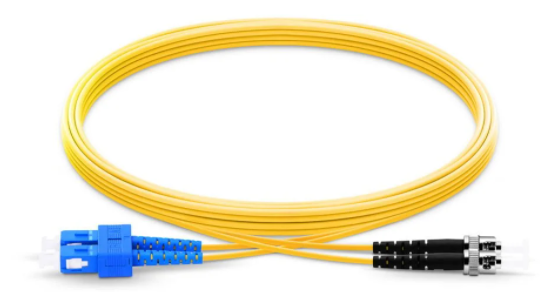Oufu Optical Fiber Cable Co.,Ltd
Address: Shenyang, Liaoning, China
Contact person: Manager Zhang
Phone: 400-964-1314
Mobile phone: +86 13904053308
【whatsapp && wechat】
2024-07-15 1432
In the realm of telecommunications and fiber optic networks, Single Mode Fiber Patch Cables (SMF Patch Cables) play a pivotal role in ensuring high-speed, reliable data transmission over long distances. This article delves into the intricacies of SMF Patch Cables, comparing them against alternative solutions to help you identify the most suitable product for your specific application scenario.

A Single Mode Fiber Patch Cable is a specialized type of fiber optic cable designed to transmit light in a single mode, ensuring minimal dispersion and maximum bandwidth capacity. These cables consist of a thin core (typically 9 microns in diameter) surrounded by a cladding material with a slightly lower refractive index. This design restricts the light to propagate in a single transverse mode, making them ideal for long-haul communications and high-speed networks.
Single Mode Fiber Patch Cables support bandwidths up to 400Gbps and beyond, making them perfect for high-capacity applications such as data centers, enterprise networks, and long-distance telecommunications.
With minimal attenuation and dispersion, SMF Patch Cables can transmit data over distances exceeding 10 kilometers at 1310nm and up to 40 kilometers at 1550nm, making them ideal for backbone networks and intercity links.
The fixed transverse intensity distribution at the output end of an SMF Patch Cable ensures mode cleanliness, reducing signal distortion and improving overall signal integrity. This feature is particularly useful in precision measurement devices and optical instruments.
While Multi-Mode Fiber Patch Cables (MMF Patch Cables) are also widely used, they differ significantly from SMF Patch Cables in several key aspects:
Single Mode: Typically 9 microns
Multi-Mode: Commonly 50 or 62.5 microns
The larger core diameter of MMF Patch Cables allows multiple modes of light to propagate, resulting in higher dispersion and attenuation over long distances.
Single Mode: Up to 40 kilometers or more
Multi-Mode: Limited to a few hundred meters to a few kilometers, depending on the mode
SMF Patch Cables excel at long-distance transmission, while MMF Patch Cables are more suitable for short-haul applications within buildings or campuses.
Single Mode: Supports bandwidths up to 400Gbps and beyond
Multi-Mode: Limited bandwidth capacity, particularly at longer distances
For high-capacity networks requiring gigabit or terabit-scale bandwidths, SMF Patch Cables are the preferred choice.
For intercity or international fiber optic networks, SMF Patch Cables are the gold standard. Their long transmission distances and high bandwidth capacity make them ideal for backbone networks and submarine cables.
In data centers and enterprise networks, SMF Patch Cables ensure reliable, high-speed data transmission between servers, switches, and routers. Their mode cleanliness and low attenuation contribute to overall network efficiency and performance.
The fixed transverse intensity distribution of SMF Patch Cables makes them invaluable in precision measurement applications such as interferometers and spectroscopy systems.
When selecting an SMF Patch Cable, consider the following factors:www.adsscable.cn
Connector Type: Choose connectors compatible with your existing equipment, such as LC, SC, FC, or ST.www.adsscable.cn
Cable Length: Select a length that matches your installation requirements, ranging from 0.5 meters to 20 meters or more.
Cable Jacket: Opt for low-smoke zero-halogen (LSZH) jackets for improved fire safety in data centers and other critical infrastructure.
Manufacturer Certification: Look for products certified by reputable organizations like ISO, RoHS, and CE to ensure quality and compliance.
Single Mode Fiber Patch Cables are indispensable in modern telecommunications and fiber optic networks, offering unparalleled bandwidth capacity, long transmission distances, and mode cleanliness. By comparing SMF Patch Cables with Multi-Mode alternatives and understanding their unique features, you can confidently select the most suitable product for your specific application scenario. Whether it's long-haul communications, data center infrastructure, or precision measurement devices, SMF Patch Cables are the key to unlocking the full potential of fiber optic technology.